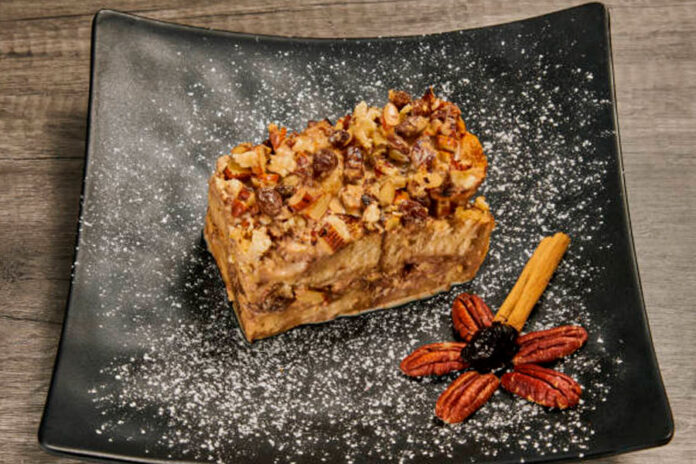Some say capirotada was discovered in the 1500s, but I truly understood its significance as a poor 12-year-old Mexican boy over 60 years ago. At that time, I had no idea about the religious symbolism behind this wonderful dish.
Lent had begun, and Easter was approaching. All 12 of us children eagerly awaited this special treat that came around only during this season.
We didn’t eat much bread in our house—flour tortillas, made by our father, Marcos, were our staple. Back then, you couldn’t find tortillas or other Mexican products in grocery stores. But there we were, watching our oldest sister, María, take charge of this magical creation.
We were very poor and rarely saw bags of cookies or sweets in our home. When family members visited from Mexico, we were sometimes treated to authentic Mexican pastries, but those moments were rare.
We had only one big blue speckled pan, which we usually used for cooking beans, chicken soup, and other dishes. But now, it would hold a new treasure as María carefully assembled the capirotada.
Many cultures have special foods tied to religious and cultural traditions, and capirotada is no exception.
The slices of bread represent the body of Christ; the sugar syrup symbolizes Christ’s blood; the cheese, often queso fresco or cotija, reflects the Holy Shroud; cinnamon sticks represent the wooden beams of the cross; cloves are seen as the nails that were hammered into Christ’s body.
Beyond these key ingredients, the recipe varies by region and family tradition. Some versions include almonds or peanuts, while others feature raisins, bananas, grapes, or guavas. The syrup can be water-based or milk-based, creating a custardy texture.
As the eldest, María was the magician in our kitchen, organizing and preparing this extraordinary dish. Though tortillas were king in our house, we managed to find some plain white Rainbow bread, which we toasted in the oven—we didn’t own a toaster.
Layer by layer, María carefully built the capirotada: toasted bread as the base; peanuts—the cheapest nuts within our limited budget; strips of cheese; raisins; a final drizzle of dark Karo syrup, provided by the Welfare Commodity program, along with cinnamon sticks or powdered cinnamon.
We all watched in anticipation as this heavenly pudding went into our humble oven. Within an hour, the incredible scent of capirotada filled not just the kitchen but our entire tiny house.
Soon, we each had a slice of this delicious treat.
Last year, while living in Magdalena de Kino, Mexico, I discovered four shops selling capirotada. I must have eaten at least 20 pounds of it—and this year, I plan to break that record. I’ll also freeze some for special occasions.
Some people like their capirotada cold, but I prefer mine steaming hot with a glass of milk or a strong cup of coffee.
And yes, this Lenten season, I will probably make my own special Leno version.







